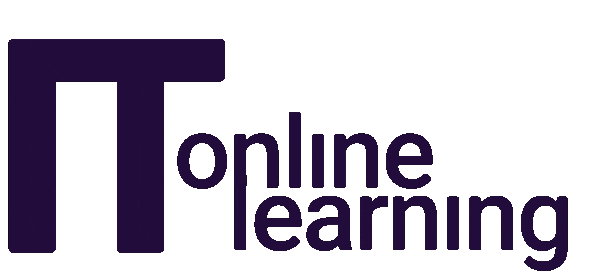We live in an age where data drives decisions, and predictive modelling stands as a game-changer, empowering industries to plan and act with precision. By using historical data to predict future outcomes, predictive modelling enables organisations to find trends, manage risks, and seize opportunities before they arise. This blog will explore the fundamentals of predictive modelling, its applications, methodologies, and tools, highlighting its pivotal role in modern data analysis.
What is Predictive Modelling?
Predictive modelling is a process that uses statistical techniques and machine learning algorithms to create models that forecast future events or outcomes based on historical data. These models find patterns and relationships in data, allowing for informed predictions about unknown future events.
Why is Predictive Modelling Important?
Predictive modelling is more than just a tool—it’s a strategic asset for any organisation looking to thrive in a competitive market.
Here’s why:
- Informed Decision Making: Predictive models offer data-driven insights that support strategic decisions, reducing uncertainty and enhancing accuracy.
- Risk Management: By expecting potential risks, organisations can take proactive steps to deal with them, ensuring stability and resilience.
- Operational Efficiency: Predictive models help businesses optimise resource allocation by forecasting demand, ultimately reducing costs and improving efficiency.
- Customer Insights: Understanding customer behaviour and preferences through predictive modelling allows companies to tailor marketing efforts, enhancing customer satisfaction and loyalty.
Key Steps in Predictive Modelling
With a clear understanding of why predictive modelling matters, let’s delve into the step-by-step process that brings these powerful forecasts to life:
- Data Collection: Gather relevant historical data from various sources, ensuring its accuracy and completeness.
- Data Preprocessing: Clean and prepare the data for analysis by handling missing values, normalising data, and transforming variables.
- Feature Selection: Find the most relevant variables that influence the outcome to enhance model accuracy and performance.
- Model Selection: Choose the proper predictive modelling technique based on the nature of the data and the prediction task.
- Training the Model: Use historical data to train the model, enabling it to learn patterns and relationships within the data.
- Model Evaluation: Assess the model’s performance using metrics such as accuracy, precision, recall, and F1 score.
- Deployment and Monitoring: Implement the model in real-world scenarios and continuously check its performance to ensure it stays accurate and relevant.
Common Predictive Modelling Techniques
Predictive modelling encompasses a range of techniques, each suited to different types of data and prediction tasks:
- Linear Regression: A statistical method that models the relationship between a dependent variable and one or more independent variables, making it ideal for continuous data.
- Logistic Regression: Used for binary classification problems, this technique predicts the probability of an outcome based on input variables.
- Decision Trees: A tree-like model that splits data into branches to make predictions based on feature values, offering a clear visual representation of decision-making processes.
- Random Forest: An ensemble method that combines multiple decision trees to improve accuracy and robustness, reducing the risk of overfitting.
- Support Vector Machines (SVM): This machine learning algorithm finds the best boundary between classes for classification tasks, often used in text classification.
- Neural Networks: Inspired by the human brain, neural networks can capture intricate patterns in large datasets, making them powerful for tasks like image and speech recognition.
- Gradient Boosting: An ensemble technique that builds models sequentially, with each new model correcting errors made by earlier ones, resulting in highly accurate predictions.
Tools for Predictive Modelling
To unlock the full potential of predictive modelling, it’s essential to use the right tools. Here are some of the most widely used tools in the field:
- Python: A versatile programming language with libraries like Scikit-learn, TensorFlow, and Keras, making it a popular choice for building predictive models.
- R: A statistical programming language known for its extensive libraries dedicated to data analysis and predictive modelling.
- SAS: A comprehensive software suite for advanced analytics, business intelligence, and predictive modelling, often used in large enterprises.
- SPSS: A statistical software platform designed for data analysis and predictive modelling, widely used in social sciences and market research.
- RapidMiner: A data science platform that simplifies the process of building and deploying predictive models, making it accessible to users without deep programming knowledge.
- Tableau: A data visualisation tool that integrates predictive modelling results to create interactive dashboards, helping users visualise trends effectively.
Applications of Predictive Modelling
Predictive modelling is applied across various industries, transforming data into actionable insights:
- Finance: Used for credit scoring, fraud detection, and investment forecasting, helping financial institutions manage risks and identify opportunities.
- Healthcare: Predictive models forecast patient outcomes, identify potential disease outbreaks, and enhance treatment plans, improving patient care.
- Retail: By forecasting sales, optimising inventory, and personalising marketing campaigns, predictive modelling helps retailers stay competitive and responsive to market demands.
- Manufacturing: Predictive maintenance, demand forecasting, and quality control are just a few ways predictive modelling improves efficiency and reduces downtime in manufacturing.
- Telecommunications: Predictive models help telecom companies reduce churn, optimise networks, and segment customers for targeted marketing.
- Human Resources: Predicting employee turnover, improving recruitment processes, and enhancing performance management are key areas where predictive modelling adds value.
Challenges in Predictive Modelling
While predictive modelling offers numerous benefits, it also comes with challenges:
- Data Quality: Accurate predictions depend on high-quality, comprehensive, and relevant data. Poor data quality can lead to misleading results.
- Model Complexity: Complex models, while powerful, can be difficult to interpret and require significant computational resources, potentially hindering their application.
- Overfitting: A model that performs exceptionally well on training data but poorly on new, unseen data can lead to overconfidence in its predictions.
- Dynamic Environments: Changing conditions, such as market shifts or technological advancements, can make models outdated, necessitating continuous monitoring and updates.
- Ethical Concerns: Ensuring the ethical use of predictive models, avoiding biases, and maintaining transparency are critical for building trust and credibility.
Predictive modelling is a cornerstone of data analysis, enabling organisations to look beyond the present and prepare for the future with confidence. By harnessing the power of historical data and advanced algorithms, predictive models provide invaluable insights that drive informed decision-making, enhance operational efficiency, and foster innovation. As data continues to grow in volume and complexity, the importance and impact of predictive modelling in shaping our world will only continue to expand.
By embracing predictive modelling, businesses and organisations can unlock new opportunities, anticipate challenges, and navigate the complexities of an ever-evolving landscape with precision and foresight.




